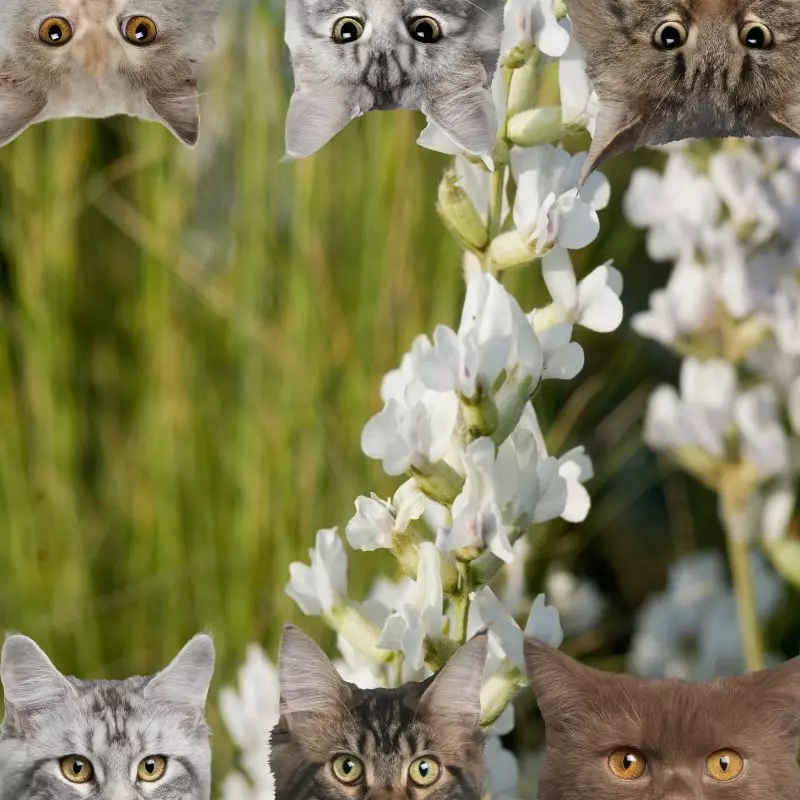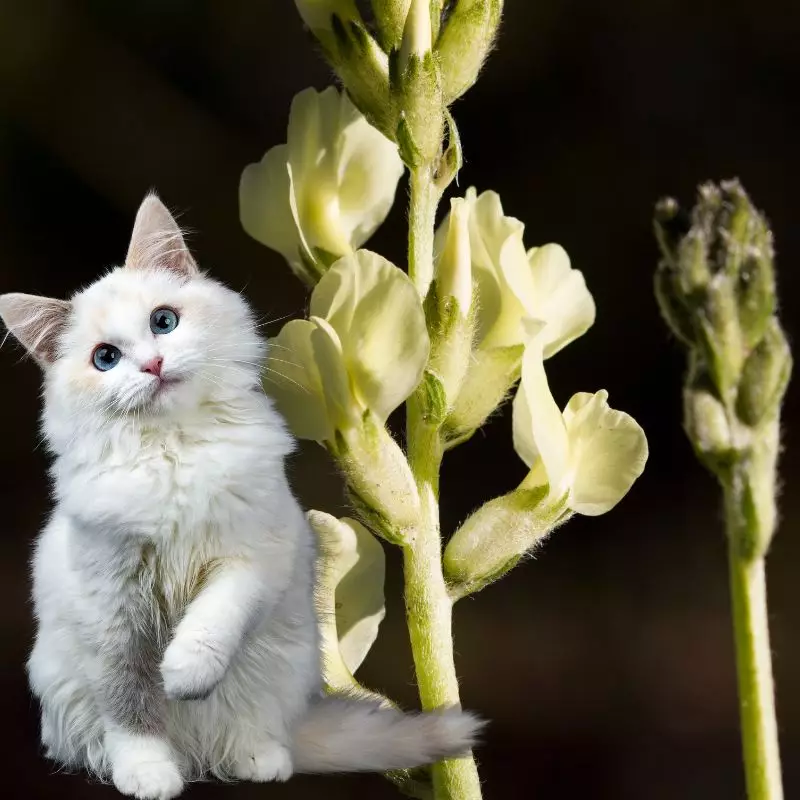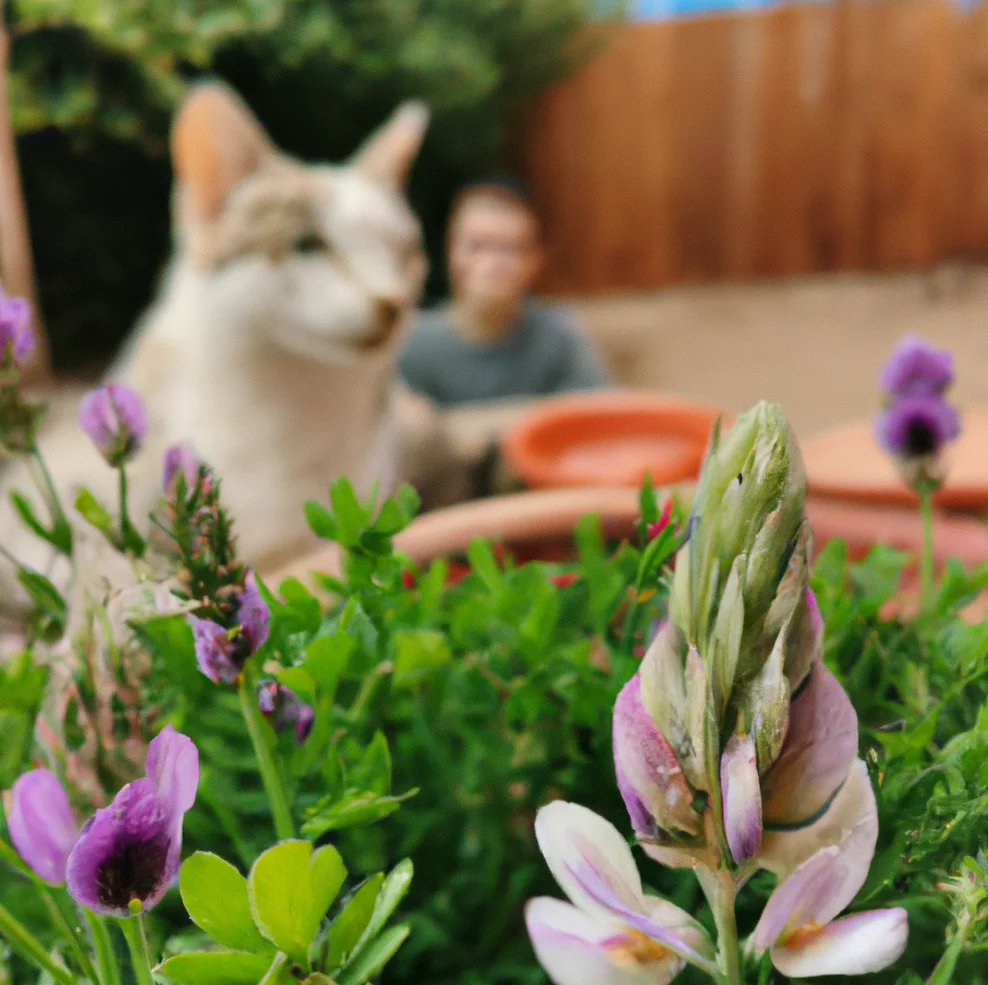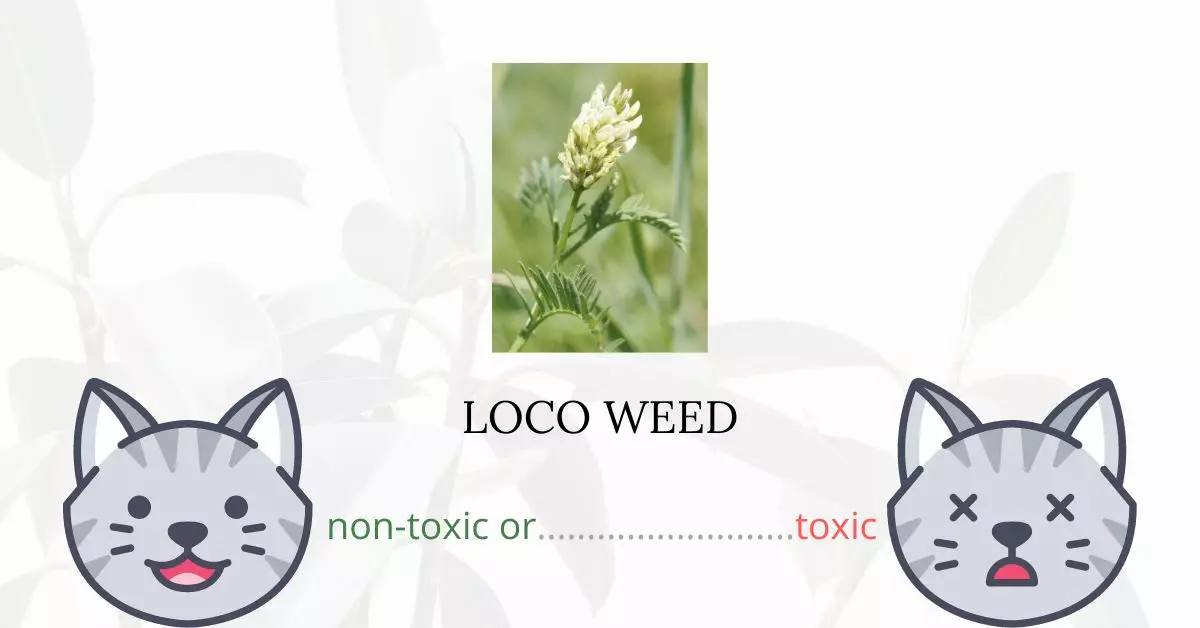Loco Weed is not toxic to cats. This conclusion is not only based on the statement from the American Society for the Prevention of Cruelty to Animals (ASPCA), but also backed by a rigorous research process.
This article was meticulously crafted in collaboration with a team of experienced DVMs (doctors of veterinary medicine). Through their expertise and valuable insights, we ensure that we offer accurate and up-to-date information on the potential risks associated with various plants, specifically Loco Weed, and their effects on feline health. Additionally, we have thoroughly researched high-authority websites such as ASPCA and PetMD to ensure comprehensive understanding on the topic.
However, it’s important to note that while Loco Weed might not pose a direct threat to cats, it contains phytotoxin swainsonine which can be harmful to livestock, including horses and grazing animals. When in doubt, always reach out to a poison control center or a local veterinarian for guidance.
Can Cats Eat Loco Weed?

Although the ASPCA lists loco weed as one of the safe plants for cats, it is not advisable for cats to consume it. If this occurs, it is important to speak with a veterinarian because it could cause your cat to vomit or have diarrhea.
Because they are obligate carnivores, cats’ gastrointestinal systems and metabolisms have been designed to accommodate eating meat. They have poor digestion and can’t absorb these essential nutrients from vegetables, thus they need meat to provide them.
What is Loco Weed?

Loco weeds (Oxytropis spp.) from the Fabaceae Family are native plants of North America. The name locoweed comes from the Spanish word loco, which means crazy and is used to describe the odd behavior of animals that have been poisoned.
Loco weeds grow in semiarid and foothill environments. They develop in 8 to 30 cm high tufts or bunches. Sweet pea-like blossoms grow on locoweed. Blossoms might be white, yellow, blue, or purple. Depending on the location, species, and moisture, growth can begin in the late fall, winter, or early spring. Each stem has several leaves and a leaflet at the tip.
Keeping Cats Away From Loco Weed

By spraying the leaves and then putting cayenne pepper on them, you can stop your cat from gnawing on plants. You could also want to think about giving your cat a container filled with grass (normal grass, not the medication).
Purchase some plastic needlepoint canvas from your neighborhood hobby/craft store if your cats are digging in your plants. Trim it to fit the shape of the pot, then make a hole for the plant in the center by cutting a slit in it. Your cat won’t be able to dig if you rest it on the ground.
Always keep your soil covered. Cats will be discouraged from digging by adding mulch, pebbles, pinecones, stones, crystals, or seashells to the top of your soil line.
Plants to Avoid For Your Cats
If you are a cat owner and unsure if the plants growing in your yard are harmful to your cats, check out this list of toxic plants for cats. You can also check our list of non-toxic plants for cats.





